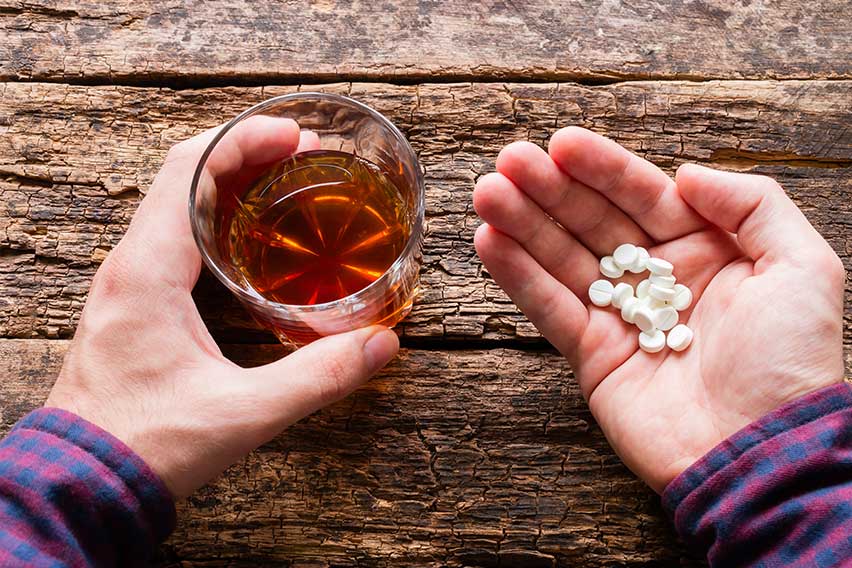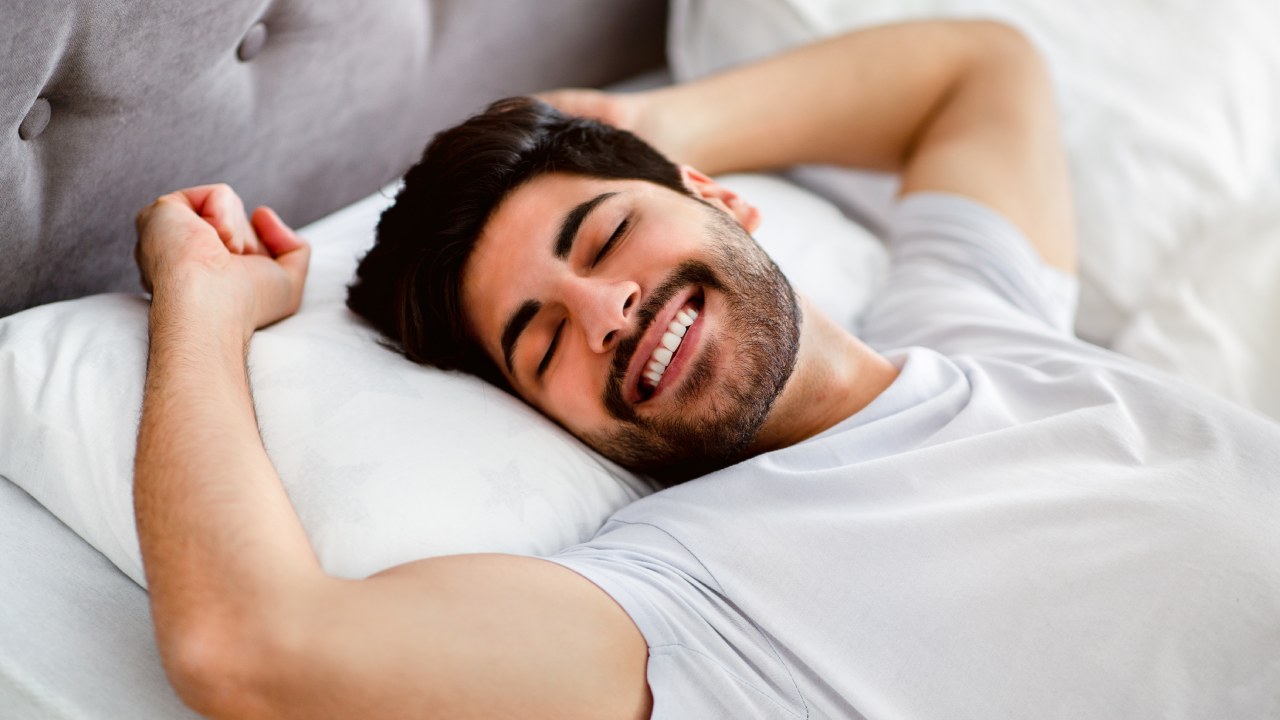Xanax or alprazolam is a prescription drug that’s often used to treat panic disorders, anxiety, and certain sleep-related issues. It belongs to the class of drugs known as benzodiazepines (benzos), and it is highly addictive.
Although a person would have to take a significant amount of Xanax to experience a Xanax overdose, overdosing on Xanax can occur at far lower doses when this drug is consumed with alcohol. That’s because both Xanax and alcohol suppress the respiratory and central nervous systems. Given the incredibly high rate of Xanax abuse among prescription holders, people who take more of this drug than their doctors have prescribed, and those who regularly pair Xanax with alcohol are advised to seek addiction treatment.
What Happens When You Mix Xanax and Alcohol?
Alcohol and Xanax affect the brain and its functioning in very similar ways. Both have a marked sedative effect. As such, nervous system activity slows down significantly after taking these substances, whether they are taken individually or together.
Both trigger the release of gamma-aminobutyric acid (GABA). This is the inhibitory neurotransmitter that’s responsible for sedation. When drinking on Xanax, the risk of over-sedation becomes incredibly high. Together, these two substances are known to cause:
- Respiratory depression
- Cardiac issues
- Significant decreases in cognitive functioning
- Loss of coordination and balance
- Loss of consciousness
The effects of combining alcohol and Xanax can be different for each person. Depending upon the type and amounts of alcohol consumed, Xanax users should never assume that it’s safe to take both together in any quantity.
Why is Mixing Them Dangerous?
When used together, each of these substances increases the potency of the other. Xanax makes alcohol more potent, and alcohol makes Xanax more potent. Alcohol does so by increasing the amount of Xanax present in the bloodstream while Xanax slows the body’s ability to metabolize alcohol. When combined at dangerous levels, a person can experience shallow, labored breathing, chest pains, and significant feelings of disorientation.
Because Xanax is often obtained by prescription, many people underestimate its potency and its ability to cause serious health issues. Even when no other substances are taken, overuse of Xanax can cause respiratory and cardiac issues that prove fatal. When Xanax is used with alcohol, there is no acceptable dosing level for avoiding these developments.
Pairing Xanax with even very modest amounts of wine or beer should always be considered dangerous, just as pairing Xanax with large quantities of hard liquor is. Given their heightened effects when combined, the risk of overdosing on Xanax and alcohol exists whenever these two substances are used together.
Xanax and Alcohol Side Effects
By working to limit brain activity, alcohol and Xanax slow signals from the central nervous system. Individually, these substances have a relaxing effect that makes people feel calm and euphoric. When paired, their impact on basic physiological functioning can cause panic to set in. As people struggle to focus, breathe, and regain their equilibrium, many of the symptoms that Xanax was initially meant to treat may present and heighten.
When the body becomes overwhelmed by this pairing, several uncomfortable symptoms can develop. These include:
- Labored breathing
- Drowsiness
- Fainting
- Slowed pulse
- Slurred speech
- Irritability
- Memory loss
While some people have paired alcohol and Xanax before without developing any noteworthy symptoms of distress, others have experienced seizures, coma, and even death. If you have used alcohol and Xanax together in the past, you shouldn’t assume that your next experience will be exactly like your last. Without any way of measuring the combined effects of xanax and alcohol, there is never a way to know for sure whether using them together will prove injurious or even fatal.
Even for Xanax users who’ve consumed benzos and alcohol together multiple times, Xanax and alcohol side effects can increase in their prevalence and intensity based upon changes in tolerance levels, body weight, general health, and brain chemistry among other factors.
When Is It Safe to Take Xanax After Drinking?
People are advised to wait two to five days after taking Xanax or any other benzodiazepine before drinking alcohol. Xanax has the shortest half-life among prescription benzodiazepines. It begins leaving the body within just 11 hours of a person’s last use, and is completely clear after 50 hours. However, if you take Xanax on a regular basis, residues of this drug will stay in your system for approximately five days.
Thus, you should consult with your doctor before drinking at all. When Xanax is used as part of any ongoing plan for managing panic disorder, anxiety disorder, or insomnia, alcohol consumption should cease entirely until Xanax use has been stopped, and until the body is completely free of this drug. Drinking on Xanax is always a bad idea. This, however, is also true of taking Xanax after drinking.
If you’ve been drinking alcohol and wish to use Xanax to calm your nerves or promote sleep, you should consult with your pharmacist or doctor first. Taking Xanax after drinking can be just as dangerous as drinking while on Xanax. Factors such as age, body weight, medical condition, and even gender all play roles in determining the right schedule for resuming Xanax use.
Most people are fine to resume their Xanax dosing schedules one to two full days after drinking. If you’ve become chemically dependent upon Xanax and cannot wait until you’re no longer intoxicated before taking your medication, call your doctor right away.
Accidental Overdoses
Alcohol and Xanax are a pairing that’s responsible for a very high number of accidental overdoses. This is due in large part to the fact that these two substances heighten the effects of each other. Moreover, many people have a hard time assessing their tolerance for alcohol, and may drink more than they intend to when using Xanax.
Given that both have a marked sedative effect, fainting episodes, coma, and other similar developments often make it difficult for others to determine that an overdose has occurred. When people surrounding someone who’s overdosing on Xanax and alcohol believe that they’ve simply passed out, timely medical interventions are unlikely to be received.
Pairing Xanax with alcohol or any other substance is often a sign of addiction. This medication is highly effective for treating anxiety and sleep disorders, but it is also incredibly addictive. When paired with alcohol, the drawbacks of using Xanax far outweigh its benefits. The risks of using these two substances together are never worthwhile.
If you or someone you care about uses alcohol and Xanax, getting help could prove life-saving. Call Recovery Bay Center today to learn more about our medically assisted detox services and our inpatient addiction treatment.
If you or someone you care about is struggling with substance abuse involving alcohol and Xanax, seeking help is not just advisable but potentially life-saving. The complex interplay between alcohol and Xanax can lead to severe health risks and complications, making it crucial to address the situation promptly. Reach out to Recovery Bay Center, a reputable and specialized men’s drug rehab facility, to explore the comprehensive assistance we offer. Our expert team understands the unique challenges that men face in addiction and recovery, and we are dedicated to providing tailored support to address these concerns.
Durg Rehab at Recovery Bay Center
Recovery Bay Center stands out for its commitment to men’s well-being and recovery. As a leading men’s drug rehab center, we offer a holistic approach that combines medical expertise with psychological and emotional support. Our medically assisted detox services ensure a safe and comfortable withdrawal process, minimizing the physical discomfort and potential dangers associated with alcohol and Xanax withdrawal. This initial step sets the foundation for the inpatient addiction treatment program that follows.
Our inpatient addiction treatment program at Recovery Bay Center is designed to provide men with a structured and supportive environment for their recovery journey. We understand that overcoming substance abuse involves addressing not only the physical dependency but also the underlying emotional triggers and psychological factors. Through evidence-based therapies, counseling sessions, and personalized treatment plans, our experienced staff guides individuals in developing coping strategies, building resilience, and achieving lasting recovery.
By choosing Recovery Bay Center’s men’s drug rehab program, individuals not only access effective treatment but also join a community of peers who understand the challenges they’re facing. The camaraderie and shared experiences in our supportive environment play a pivotal role in fostering a sense of belonging and motivation. Our comprehensive approach aims to equip men with the tools they need to regain control of their lives, break free from addiction, and embrace a healthier, more fulfilling future.
If you’re ready to take the crucial step toward recovery from alcohol and Xanax abuse, don’t hesitate to call Recovery Bay Center today. Our compassionate team is here to provide information, answer your questions, and guide you through the process of seeking help. Remember, seeking assistance is a sign of strength and determination – it’s the first step on the path to a brighter and healthier tomorrow.






